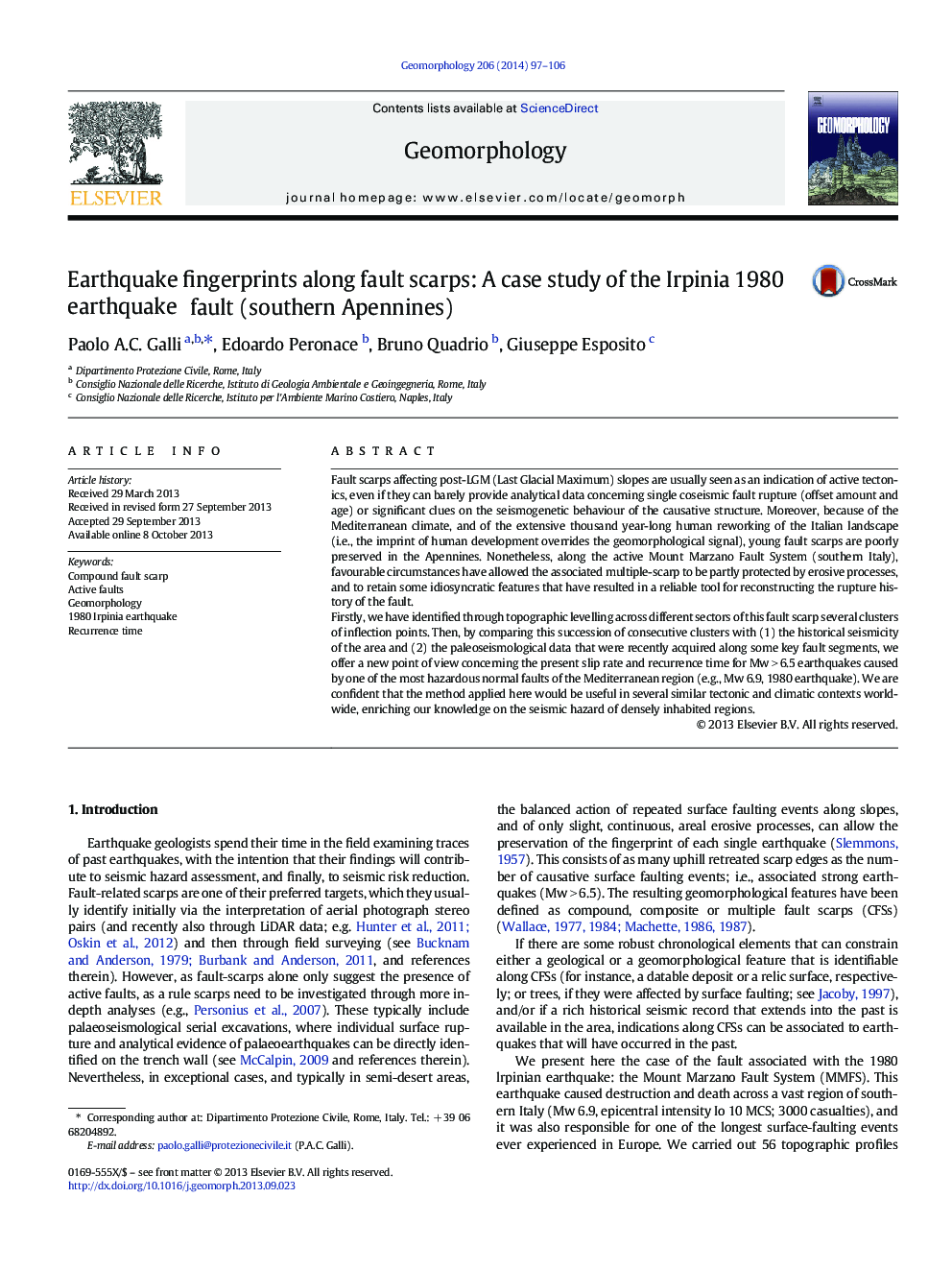| کد مقاله | کد نشریه | سال انتشار | مقاله انگلیسی | نسخه تمام متن |
|---|---|---|---|---|
| 4684648 | 1635443 | 2014 | 10 صفحه PDF | دانلود رایگان |

• Fault scarps represent a geomorphic archive of strong earthquakes.
• Compound scarps analysis of Irpinia fault provide evidence for 4 repeated earthquakes.
• New insights are given on the seismogenetic behavior of the southern Apennines faults.
• The method is applicable to other climate/ geomorphologically prone areas Worldwide.
Fault scarps affecting post-LGM (Last Glacial Maximum) slopes are usually seen as an indication of active tectonics, even if they can barely provide analytical data concerning single coseismic fault rupture (offset amount and age) or significant clues on the seismogenetic behaviour of the causative structure. Moreover, because of the Mediterranean climate, and of the extensive thousand year-long human reworking of the Italian landscape (i.e., the imprint of human development overrides the geomorphological signal), young fault scarps are poorly preserved in the Apennines. Nonetheless, along the active Mount Marzano Fault System (southern Italy), favourable circumstances have allowed the associated multiple-scarp to be partly protected by erosive processes, and to retain some idiosyncratic features that have resulted in a reliable tool for reconstructing the rupture history of the fault.Firstly, we have identified through topographic levelling across different sectors of this fault scarp several clusters of inflection points. Then, by comparing this succession of consecutive clusters with (1) the historical seismicity of the area and (2) the paleoseismological data that were recently acquired along some key fault segments, we offer a new point of view concerning the present slip rate and recurrence time for Mw > 6.5 earthquakes caused by one of the most hazardous normal faults of the Mediterranean region (e.g., Mw 6.9, 1980 earthquake). We are confident that the method applied here would be useful in several similar tectonic and climatic contexts worldwide, enriching our knowledge on the seismic hazard of densely inhabited regions.
Journal: Geomorphology - Volume 206, 1 February 2014, Pages 97–106